Els Van Den Steen’s students have worked on individual pages for the ‘Book of Fortunes,’ a crucial prop in Lady Mary Wroth’s play Love’s Victory (1617). The shepherd and shepherdess characters take it in turn to choose verses from the book which tell their ‘fortunes’ in love. This game of choosing fortunes from a book was popular on the continent, where Wroth and her family spent time. Calligraphy students transcribed these early versions of horoscopes from the play alongside other contemporary lyrics on love and fortune, using an early modern Italic hand like that of Lady Mary Wroth in her manuscripts.
The course is officially held at Kent Adult Education Centre in Sevenoaks and Maidstone. Els Van Den Steen will visit Penshurst Place on April 17th to showcase the work of her students to Professor Alison Findlay and students of Simon Langton Girls’ Grammar School who are working on Lady Mary Wroth’s Love’s Victory.
Lady Mary Wroth, her father Robert Sidney, her aunt Mary Sidney Herbert and her uncle Sir Philip Sidney all wrote love lyrics and sonnets.
In total fifteen of Els’s Adult Education students have each written a text for the Book of Fortunes: ten from her Sevenoaks classes and five from her Maidstone classes. Els Van Den Steen’s regional Kent-based calligraphy group, the Cinque Ports Scribes, will also be write some additional calligraphy (riddles and songs).
For the Book of Fortunes Els’s students were inspired by the Italic hand of the Italian writing masters from the 16th century: Arrighi, Tagliente and Palatino. This is also the hand that influenced the writing in England at the time Lady Mary Wroth wrote her play Love’s Victory. As the quill was the writing tool used during the Renaissance, they also incorporated some quill cutting during the lessons.
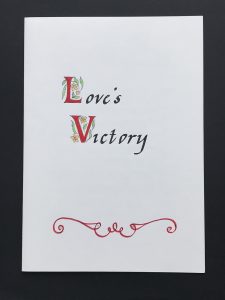
The Book of Fortunes in the play draws on a tradition of lyrics relating love and fortune, such as the Deveonshire Manuscript Poem (c. 1530s and early 1540s)
Ons me thought fortune me kiste
and bad me aske what I thought best
and I shulde have yt as me liste
therewith to set my herte in reste
I asked nought but my dere herte
to have for evermore my owne
then att an end were my smarte
then shulde I nede no more to mone
yet for all that a stormy blaste
hathe overtornid this goodlye daye
and fortune semid at the laste
that to her promis she saide naye
but like as on out of dispaire
to soden hope reviuid I
now fortune showith her self so faire
that I content me wondreslye
my most desire my hand may reche
my will is alwaye at my hande
me nede not long for to beseche
her that hathe powre me to commande
what erthelye thing more can I crave
what wolde I wishe more at my will
no thing on erthe more wold I have
save that I have to have it still.
for fortune hathe kepte her promis
yn graunting me my most desire
of my sufferunce I have redresse
and I content me with my hire
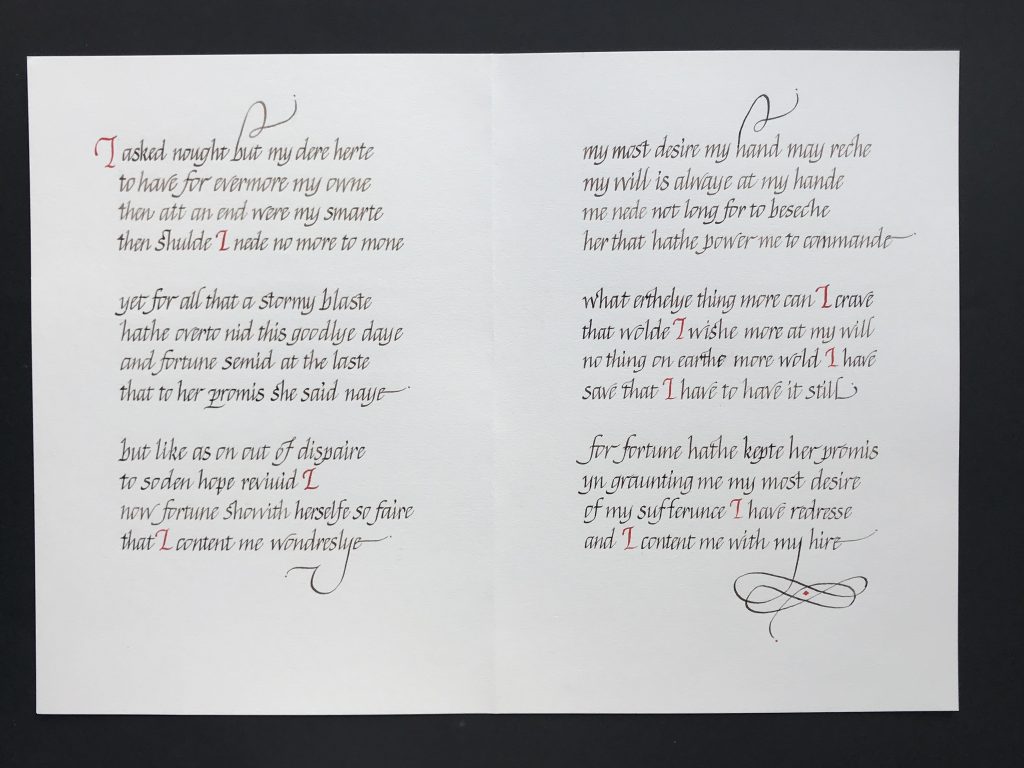
Extract from A compendious dittie wherin the state of mans lyfe is briefely touched (1547)
For flatterers seeke where fortune dooeth dwell,
And whan that she lowreth, thei bid theim farewell.
The poore doeth theim curse as ofte as thei want.
In hauyng so muche to make it so scant.
Their children sometymes doo wisshe theim in graue,
That thei myght possesse that rychesse thei haue.
And that whiche thei wyn with trauayle and stryfe,
Oftentymes (as we see) doeth coste theim their life.
Lo these bee the fruites that rychesse bryngeth foorth,
With many other mo, whiche be no more woorth.
For moneie is cause of murder and thefte,
Of batayle and bloudshed, whiche wold god wer left,
Of rauine, of wronge, of false wytuesse bearyng,
Of treason conspired, and eke of forswearyng.
And for to be shorte and knyt vp the knot,
Fewe mischieves at all that monie maketh not.
Reprinted in John Hall, Certayne Chapters of the Proverbes of Solomon drawen into meter by Thomas Sternholde, late grome of the kynges Magesties robes (1550)
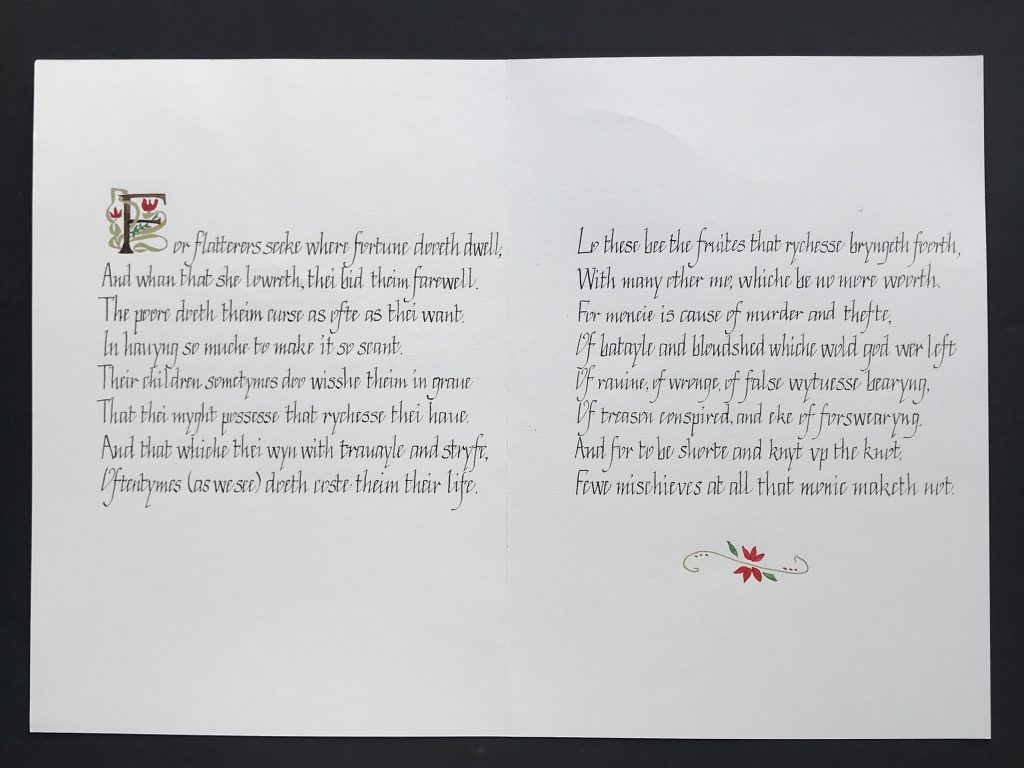
John Skelton (c. 1460 – 1529)
GO, pytyous hart, rasyd with dedly wo,
Persyd with payn, bleding with wondes smart,
Bewayle thy fortune, with vaynys wan and blo.
O Fortune vnfrendly, Fortune vnkynde thow art,
To be so cruell and so ouerthwart,
To suffer me so carefull to endure,
That wher I loue best I dare not dyscure !
One there is, and euer one shalbe,
For whose sake my hart is sore dyseasyd ;
For whose loue, welcom dysease to me !
I am content so all partys be pleasyd :
Yet, and God wold, I wold my payne were easyd !
But Fortune enforsyth me so carefully to endure,
That where I loue best I dare not dyscure
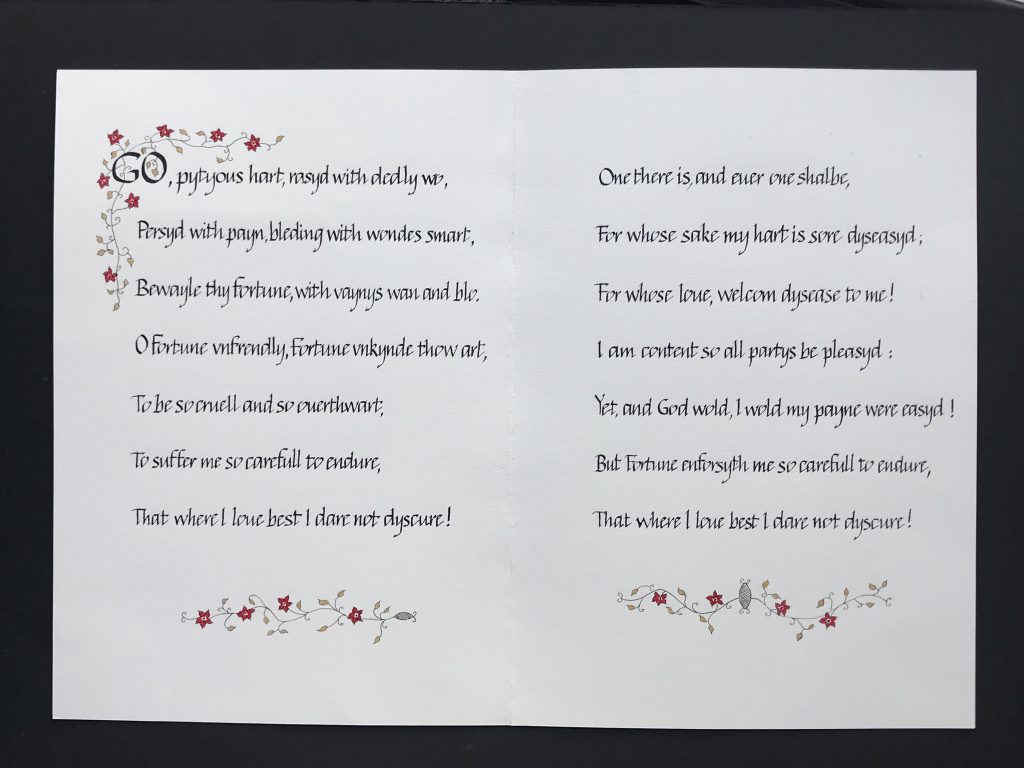
Extract from John Gower, De Confessione Amantis (1532)
Touchyng of loue and his fortune
The whiche me lyketh to commune
And pleynly for to telle it out To them that louers be aboute
Fro poynt to poynte I woll declare
And wryten of my wofull care
My wofull day my wofull chaunce
That men mowe take remembraunce
Father: There ben truantes in suche a wyse
That lacken hert, whan best were
They speken of loue, and right for feare
They waxen dombe, and dare not telle
without sowne, as dothe the belle
whiche hath no clapper for to chyme
And ryght so they, as for the tyme
Ben herteles without speche
Of loue, and dare nothynge eseche
And thus they lese, and wynne nought
Son: My father I am all beknowe
That I haue ben one of the slowe
As for to telle in loues cas
Myn herte is yet, and euer was
Although the worlde shuld al to breke
So fearful, that I dare not speke
Of what purpose that I haue nome
whan I towarde my lady come
But lette it passe and ouer go
Father: My sonne do no more so
For after that a man pursueth
To loue so fortune seweth
Ful ofte, and yeueth her happy chance
To hym, whiche maketh continuance
To preye loue, and to beseche
As by ensample I shall the teche.
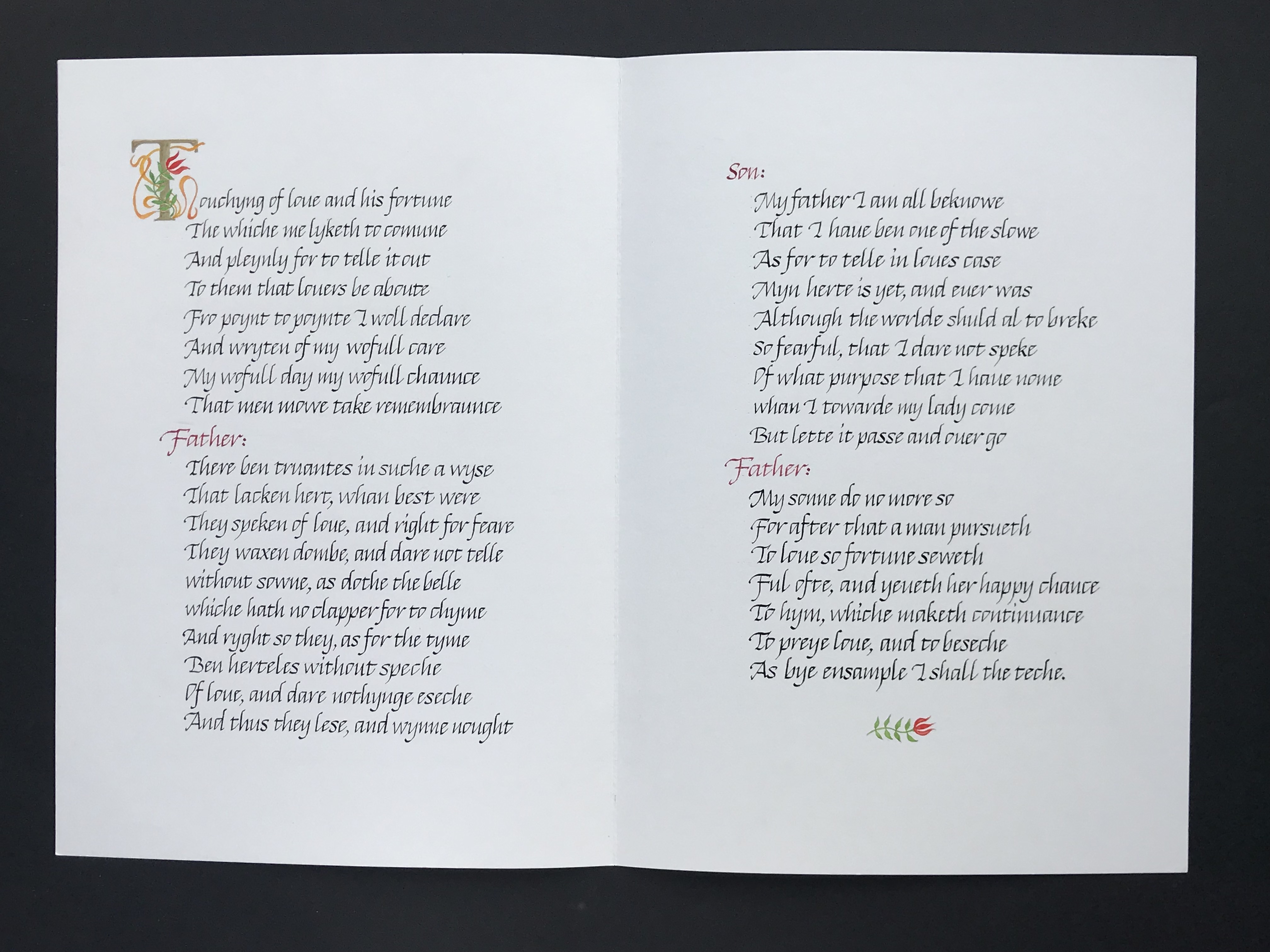
About Els Van Den Steen
Els Van Den Steen has taught calligraphy in Adult Education for more than 15 years. She is a member of the Cinque Ports Scribes and she exhibits her work with this group. She gained a CLAS Diploma of Calligraphy in 1997.

You must be logged in to post a comment.